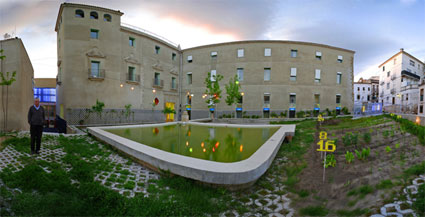
A couple of days ago, as i was in Valencia for Campus Party, i made a short trip to Castelló to check out REACTIVATE!! Espacios remodelados e intervenciones mínimas (Remodeled spaces and minimal interventions), an exhibition which takes place until August 31 at the Espai d’ Art Contemporani de Castelló. A first part of the show highlights how, with minimal means and resources, architects and designers are adapting spaces and buildings to entirely new uses.
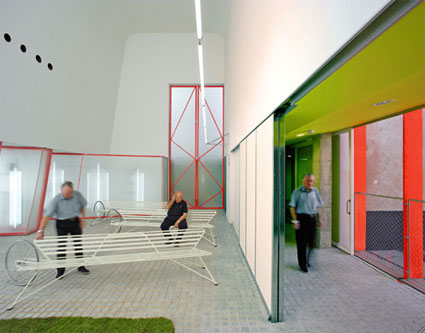
REACTIVATE!! is by far one of the most captivating shows i’ve seen this year. I’ll come back to it with more details later on. In the meantime, i thought that one of the projects i discovered there deserves a post on its own.
It has always taken a lot of threats, coaxing, promises of sweets and later on new outfits to convince me to set foot inside a church or any other religious building. Recently i felt my resistance almost melting when i saw pictures of what the Czech designers of Qubus Studio had done with the baroque St. Bartholomew’s Church in Chodovice, Eastern Bohemia.
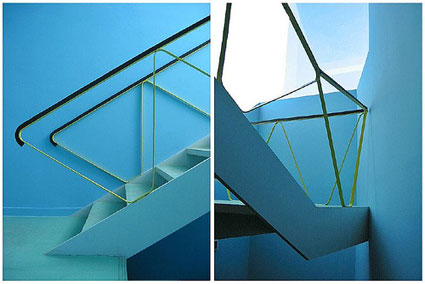 Image by Miguel de Guzmán
Image by Miguel de Guzmán
But what almost converted me to catholicism is the renovation of an abandoned seminary somewhere in Northern Extremadura by Andrés Jaque Arquitectos, a Madrid-based office ‘specialized in politically innovating projects’. The Spanish architects were commissioned with turning the Casa Sacerdotal Diocesána de Plasencia into a residential house for retired priests. Not only did they transform the 15th century building with an 19th century extension into a gorgeous and frisky place, they also took the assignment as an opportunity to foster debate and participation within and without the religious community.
Miguel de Guzmán, Andrés Jaque and Enrique Krahe divided the old garden into plots, one for each priest. Instead of a unified garden, the result is what Jaque calls ‘a political garden’ where each individual had to make a decision regarding his plot without looking for a consensus.
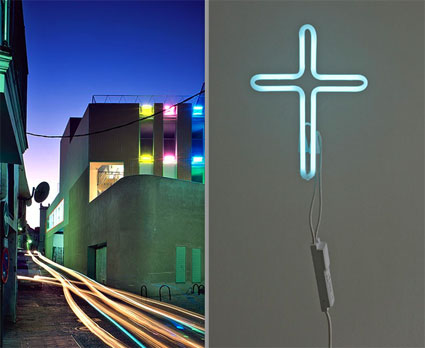
Another genius touch was to invite the priests to grab whichever lamp they used and liked in their previous houses and have them hung in a brilliant mix-match fashion around the building. Participation is even requested inside the chapel. Priests have to move around the benches, open and close the doors in order to define and perform the rituals.
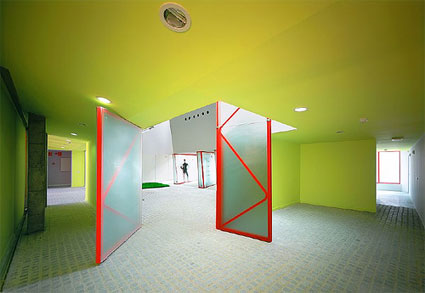 Photo Miguel de Guzmán
Photo Miguel de Guzmán
The Casa Sacerdotal is colourful, has an undeniable sense of humour and is downright iconoclast under several aspects: old washing machine doors are used as windows in the laundry space, some of the corridor floors are made of rubber, counter screens from a bank are recycled and used in the ‘self-service chapel’, the benches have wheels to make them mobile (they are called bicibancos, bikebenches), light comes from every corners and is reflected in bright green, pink or yellow, etc.
Quite understandably some of the clergymen found the design innovations frivolous, apparently they are reluctant to use the re-configurable chapel. The place actually looks more like a fancy nightclub or an art gallery than a religious residency. Must be what makes me feel irresistibly attracted to it.
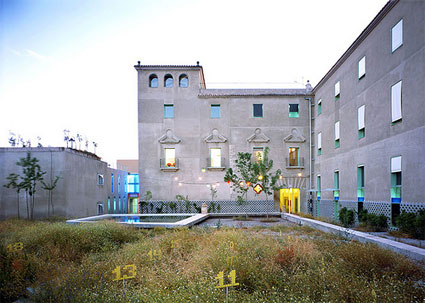 Photo: Miguel de Guzmán
Photo: Miguel de Guzmán
More images by Miguel de Guzmán.
